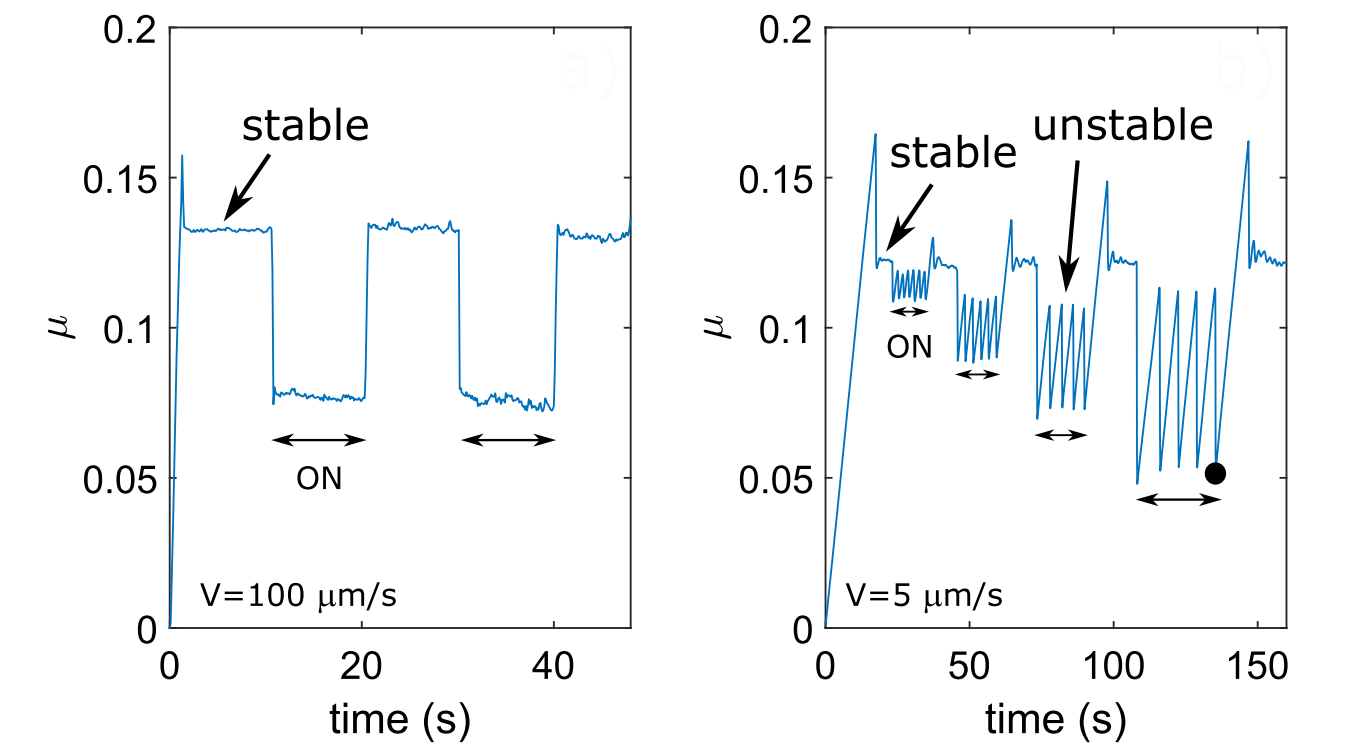Julien Léopoldès
Chercheur

Chercheur
After studying Physics at University Paris Saclay and Sorbonne University, I obtained a PhD in polymer physics and chemistry at Sorbonne University (2002).
After that I did a postdoc at Oxford University (2002-2005) and then a second postdoc at the University of Mons-Hainaut (2005-2006). Then I was recruited as a “Maitre de conférence” at the Université Gustave Eiffel, a job where you do both teaching and research.
I focus on out-of-equilibrium, disordered, and complex systems such as frictional interfaces, diffusing bacterias or granulars.

When a frictional system is submited to high frequency shaking, the ratio of shear to normal stress is either decreased (acoustic fluidization) at high slip velocity or switches to stick-slip (overageing) at low slip velocity.
Figure caption : when a frictional system is submited to high frequency shaking, the ratio of shear to normal stress is either decreased at high sliding velocity (left, acoustic fluidization) , or switches to stick-slip at low slip velocity (right, overageing).
Solid Friction
From our joints to the soles of our shoes to tectonic faults, solid friction is omnipresent in everyday life. As we learn in the first year of university, solid friction differs from fluid friction in that it has a threshold and a different, usually logarithmic, speed dependency, to which we must add aging. These ingredients give rise to the “stick-slip” phenomenon. phenomenon, during which solids in contact move abruptly and intermittently, as in earthquakes.
At Navier, we study how solid friction is disrupted by mechanical waves in all kinds of systems: solid-solid-simple interfaces, granular media, and even a finger in contact with a smartphone screen. This provides solutions for controlling friction to allow smooth relative movement between small pieces of electromechanical systems, making new touch screens with haptic feedback, or understanding some physical mechanisms behind the remote triggering of earthquakes.
Plastic strain in granular media
with Ibrahim Awada, Vincent Langlois, and Michel Bornert
Granular media are systems composed of solid grains, a good model for soils. By which mechanisms the particles rearrange in granular media near yielding is unknown.
We study the local strain in granular media with an experimental setup combining imaging, rheology, and multiply scattered ultrasound waves.
Left : tracking of the grains in a sheared granular. Right : reconstruction of a selected trajectory during fifty shear cycles. Scale bar is 0.1 mm.